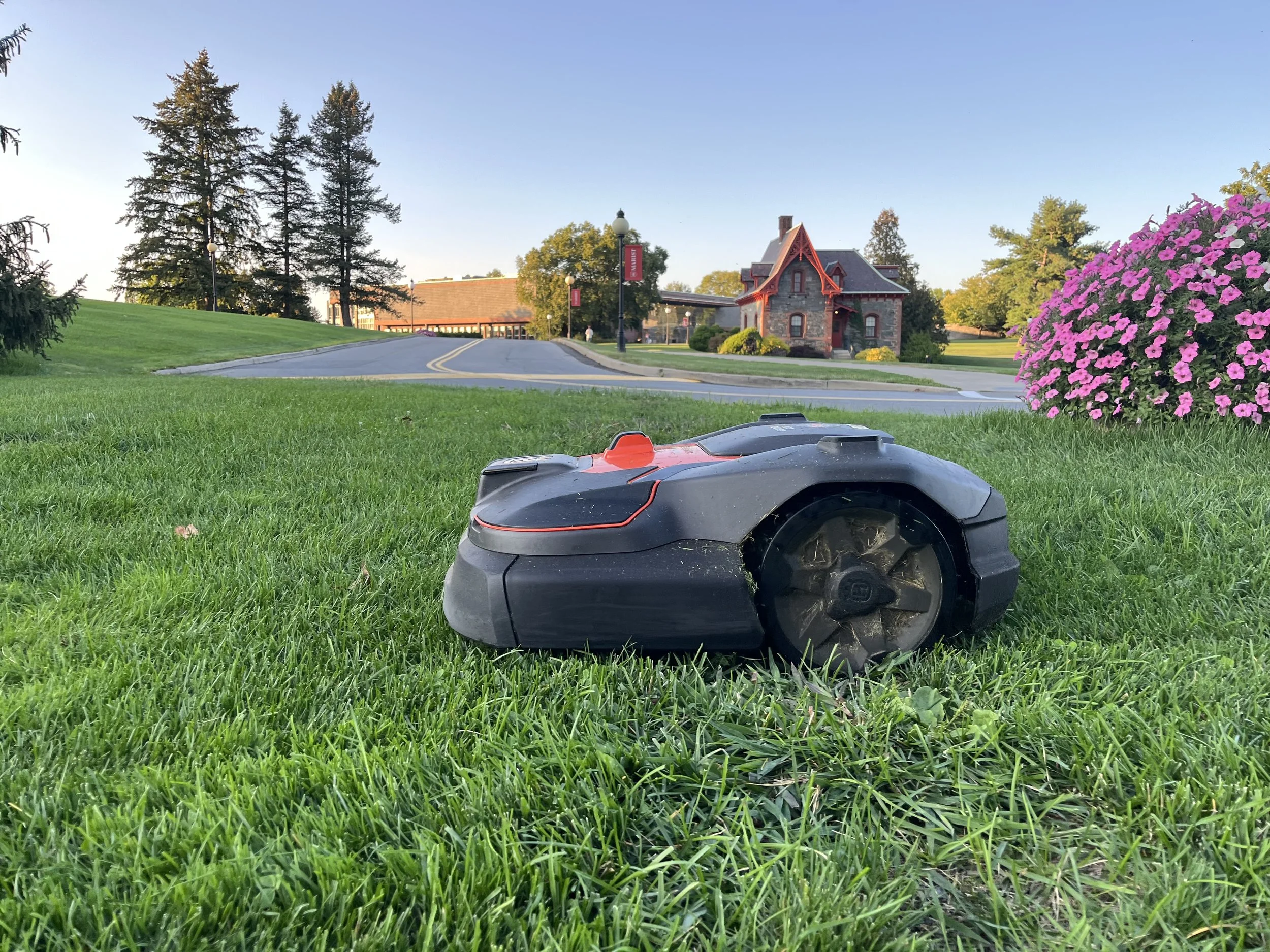Mowers of Mayhem
Automatic lawn mower cuts grass in the field between Lowell Thomas and the James A. Cannavino Library Lilian DeFilippis '26
Unless you’ve been consistently taking the Marist shuttle around campus, you’ve likely noticed the new presence of robotic lawn mowers milling along nearly every patch of grass. These little machines are presumably intended to be more efficient, save labor and manage the prized green.
But of course, the inquisitive students of Marist may wonder if these mowers are beneficial, or a nuisance that may even reflect a robot takeover. Are the “lawn Roombas” a worthwhile investment or a misguided choice?
The latter may be the case from both an environmental and a social standpoint. These robots seem to be replacing the landscapers and mowers on campus, as well as harassing our beloved groundhogs.
It is often assumed that Generation Z, especially students, is fond of technological improvements as artificial intelligence increases in popularity. On the contrary, many of us have a resistance towards it. These robot lawn mowers are just the icing on the cake that is the overuse of technology. The replacement of valuable human labor may save time, but the job is not getting done as intended.
Although the landscapers on campus are likely working on another task, it still reflects the trend of replacing human workers with robots. If these became the widespread form of cutting grass, many hard-working mowers would be out of a job. Landscaping is a huge and prosperous industry, one that would be significantly dampened by a robotic shift.
Now, perhaps the best example of robotic evil has been witnessed as these quieter, more subtle machines have startled campus groundhogs. Robot lawn mowers lack the eyes or consciousness to avoid critters, which can scare or even endanger them. These adorable and, frankly, honorary Marist mascots should not have to fear grazing on the green – something they are clearly fond of doing. While it is very unlikely that one of these robot mowers will actually harm the groundhogs, it is likely that these machines have caught them unexpectedly.
These chubby rodents are reacting as you’d expect them to – by running into nearby bushes in fear of this unfamiliar predator. Seeing this firsthand made me sad for them, as an avid fan of the campus groundhogs.
This being said, if robotic lawn mowers are truly a beneficial asset to Marist landscaping, there must be a way to ensure that no groundhogs are harmed in their process. This is a question to pose to staff and those who, frankly, have any kind of machinery knowledge; I do not.
By no means is this a villainization of these new “lawn Roombas,” rather a simple criticism based on what I and many of my peers have witnessed. Giving credit where it is due, it must be said that these machines are much less cumbersome and loud than regular mowers. In conjunction with real mowers, valuable time may be saved by this technological improvement.
Besides, doesn’t the green look great?
